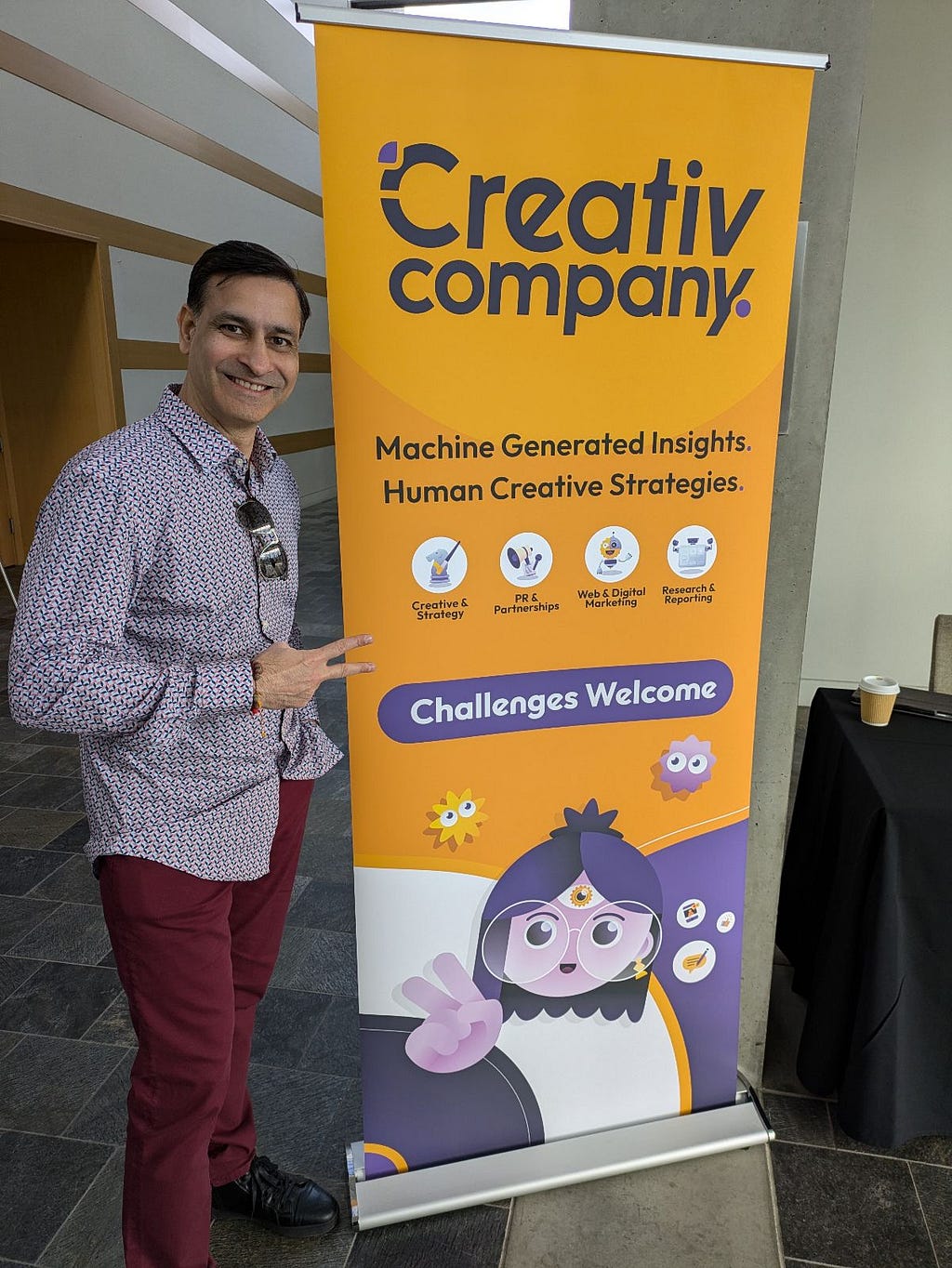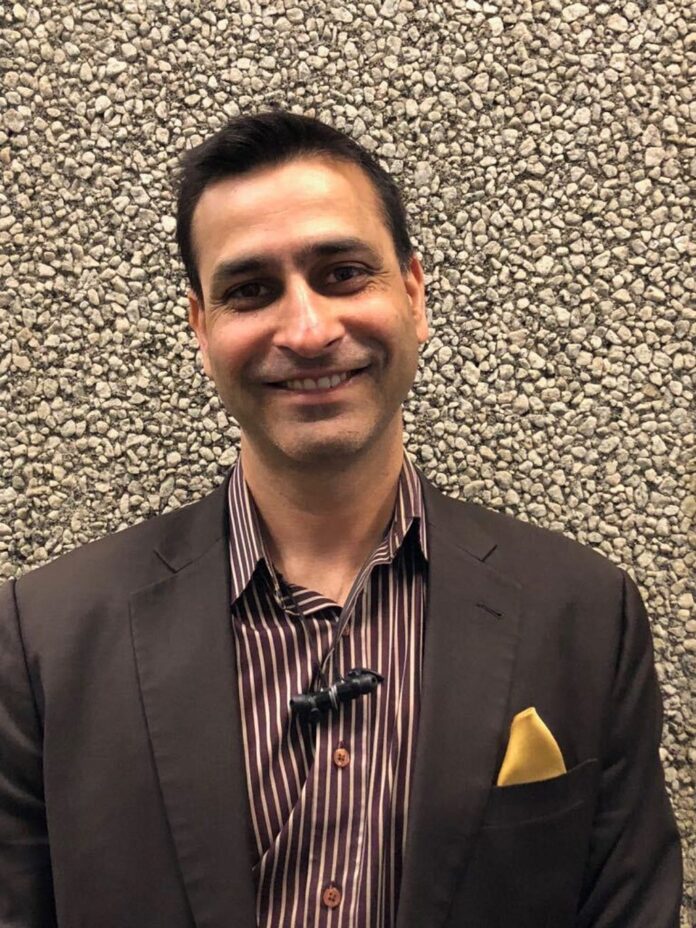Community-Driven Content Moderation: The shift from manual content moderation to sophisticated hybrid systems and self-sustaining models marks a significant transformation in how we consume information. By managing the vast landscape of user-generated content, these systems aim to balance safety with freedom of expression.
Artificial Intelligence is transforming industries at a breakneck pace, and the entrepreneurs driving this innovation are at the forefront of this revolution. From groundbreaking applications to ethical considerations, these visionaries are shaping the future of AI. What does it take to innovate in such a rapidly evolving field, and how are these entrepreneurs using AI to solve real-world problems? As a part of this series, I had the pleasure of interviewing Vibhu Bhan.
Vibhu Bhan leads operations, research, artificial intelligence implementation, and product development as Chief Operation and Information Officer at Creativ Company. Bhan has over 20 years of data science, product development, and consulting experience at prestigious consultancies and banks including CGI, CIBC, QEData. He previously led complex product initiatives, building out complex technical data solutions, at both the Canadian Imperial Bank of Commerce and Wells Fargo. He owns 5 patents in the U.S. and Canadian offices related to large data science models, artificial intelligence, and large language models. His firm talkAItive joined Creativ Company in January of 2024 to launch a first-of-its-kind advertising analysis product, machine-generated insights, based on his invented stack of large language models, affectionately called ellain. He resides in Toronto, Canada with his wife and young son.
Thank you so much for joining us in this interview series. Before we dive in, our readers would love to learn a bit more about you. Can you tell us a bit about your childhood backstory and how you grew up?
I was born in New Delhi, India, but shortly after, my family and I moved to Punjab. There, I watched my dad build a unique consulting practice that significantly contributed to the growth of the textile weaving industry in Ludhiana, Punjab. From him, I learned the importance of building genuine relationships, exploring new opportunities, and fostering industry growth by applying advanced weaving technology from Japan. My parents always encouraged creative thinking, whether it was solving academic challenges or engaging in activities such as stage acting, public speaking and dancing.
My fascination with computers began in grade 9 when I learned basic data entry using a database called FoxPro. Discovering that I could create and save new information on a platform other than a notebook or register sparked my curiosity about software.
Since then, I have been on a journey to understand how to apply software technology to solve real-world problems and seize opportunities.
Can you share the most interesting story that happened to you since you began your career?
It’s tough to pick just one, but I notice a common theme throughout my experiences. I’ve always enjoyed working with early-stage startups — interestingly, my first job was with a three-person startup developing the first-ever HR management system for a tier 1 bank. This experience set the tone for my career, where I prefer working in startup mode but still making an impact on larger, established enterprises.
None of us are able to achieve success without some help along the way. Is there a particular person who you are grateful towards who helped get you to where you are? Can you share a story about that?
I am grateful to everyone I’ve worked with or reported to, as I’ve learned valuable lessons from all my peers and seniors. They’ve helped me understand the importance of staying focused, being true to myself and knowing which noise to ignore.
Also, I am grateful to be in the company of stellar individuals at Creativ Company driving ellain development and operations, who have contributed tremendously towards the success we have experienced so far.
Lastly, I would like to thank my wife for being a pillar of stability during turbulent times. Her support has kept me strong and focused during demanding work periods, and I enjoy our time together when it’s time for a break.
Can you please give us your favorite “Life Lesson Quote”? Can you share how that was relevant to you in your life?
I have a wall full of “life lesson quotes,” but the one that always energizes me is: “Struggle builds character, don’t skip it!” Building a business from concept to reality has been an immense struggle. Throughout this journey, I’ve experienced both moments of weakness and strength. Without that struggle, we wouldn’t have pushed ourselves to solve the problems we tackle today.
You are a successful business leader. Which three character traits do you think were most instrumental to your success? Can you please share a story or example for each?
Creative Thinking: Building ellain has involved applying a vast range of machine intelligence software and hardware technologies. We’ve applied well-known algorithms to solve key business problems, such as predicting the next best product for a retailer or identifying which brands would best partner based on an online community’s preferences. This approach creates more relevant and immersive ad experiences.
LEGO (Low Ego Grand Organizer): For me, this means striving every day to lead and organize with a grand vision in mind, while focusing on the collective goal rather than seeking personal recognition.
Problem Solver: Being a problem solver is crucial for any leader, no matter the field — I engage in this daily while working on our ellain technology, which demands constant innovation, problem solving and finding solutions to new and diverse challenges. Recently, we applied machine intelligence — a combination of LLM, ML, and statistical rigor — to detect over 37 different sub-categories of “pain points” expressed in gaming communities online. This helps our clients understand what to prioritize and when to fix issues or communicate effectively.
Ok super. Let’s now shift to the main part of our discussion. Share the story of what inspired you to start working with AI. Was there a particular problem or opportunity that motivated you?
I’ve always been interested in applying software technology to solve problems, especially in automating tasks.
In 2017, I felt it was the right time to use machine intelligence to extract what we now call “machine-generated insights.” This was driven by an abundance of data from online communities, the critical need for brands to understand consumer preferences and communicate effectively, and the fact that digital lifestyles have become integral to our existence. Since the advent of early neural network models and significant yearly improvements in hardware costs and availability, I’ve been motivated to continue applying machine intelligence to solve essential business challenges.
Describe a moment when AI achieved something you once thought impossible. What was the breakthrough, and how did it impact your approach going forward?
One of our clients had amassed a gold mine of one million reviews collected during the checkout process, but was unsure how to move beyond basic word frequency analysis — they faced the challenge of better understanding their customers’ preferences for specific product categories. Using talkAItive (the predecessor of Creativ Company’s ellain), we applied a multi-modal LLM technique to determine whether each review was related to a specific product category. We then summarized the preferences at the category level. This entire process was completed in just five weeks, a feat that wouldn’t have been possible using only traditional machine learning techniques.
This was a major breakthrough, which we have since refined to become more specific vs. generalized in describing pain points and preferences related to very specific topics including products, features or user-defined keywords.
Talk about a challenge you faced when working with AI. How did you overcome it, and what was the outcome?
A specific challenge we continue to grapple with is understanding the zeitgeist while still including information that’s expressed through social norms like slang or sarcasm. Our research so far has helped us see language usage as “normal” vs. “outlier” related to specific contexts. We expect to continue this stream of development and refinement, as understanding language usage is our core competency.
Can you share an example of how your work with AI has had a meaningful impact (on others, on business results, etc)? What was the situation, and what difference did it make?
At Creativ Company, we have helped our clients discover new insights about their online communities, from data that was already accessible. This has allowed them to validate brand awareness, assess the effectiveness of online campaigns, and guide their product development roadmap.

Based on your experience and success, can you please share “Five Things You Need To Know To Help Shape The Future of AI”?
1. Community-Driven Content Moderation: The shift from manual content moderation to sophisticated hybrid systems and self-sustaining models marks a significant transformation in how we consume information. By managing the vast landscape of user-generated content, these systems aim to balance safety with freedom of expression.
2. Open Anonymized Social Data: Making use of anonymized social data can drive AI advancements by providing rich insights while respecting user privacy.
3. Hardware Breakthroughs: Advances in hardware that make computing more affordable and faster are crucial for AI development.
4. Machine-Generated Insights Consumption Interfaces: Innovative interfaces such as gesture-driven, immersive, relevant views, and even holographic visualization are changing how we interact with AI-generated insights.
5. Value of Learning from Online Community Data: Marketers increasingly see the benefit of grounding their research in real data from online communities, which offers valuable insights.
When you think about the future of AI, what excites you the most, and how do you see your work contributing to that future?
AI is the innovation that helps us humans do more, do better and with less effort. This is the core promise that excites me the most. At Creativ Company, we hope to contribute both software and operational approaches to learning customer preferences across large swaths of unstructured data.
What advice would you give to other entrepreneurs who want to innovate in AI? Can you share a story from your experience that illustrates your advice?
Stay creative and embrace challenges, as they are tools for learning. Keep refining your ideas through trial and error. Instead of “faking it ’til you make it,” focus on being authentic.
Find one or two co-founders whose skills complement yours. For example, when I started my journey in AI, I faced numerous obstacles, but each setback taught me something valuable. I also teamed up with co-founders who brought different strengths to the table, which made a huge difference in our success.
Is there a person in the world, or in the US with whom you would like to have a private breakfast or lunch, and why? He or she might just see this, especially if we tag them. 🙂
Elon Musk. I admire his multi-disciplinary strengths and grand vision. I would love to just get to understand his motivations and processes to stay on the path of manifesting the impossible realities.
How can our readers further follow your work online?
You can follow my work through The Brief newsletter by Creativ Company, where we spotlight the innovations and successes of ellain and machine-generated insights. Follow us on LinkedIn and www.creativ.com.
Thank you so much for joining us. This was very inspirational, and we wish you continued success in your important work.
Vibhu Bhan Of Creativ Company On Pushing the Boundaries of AI was originally published in Authority Magazine on Medium, where people are continuing the conversation by highlighting and responding to this story.


